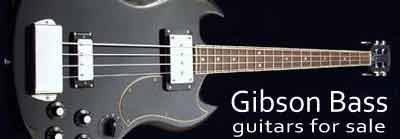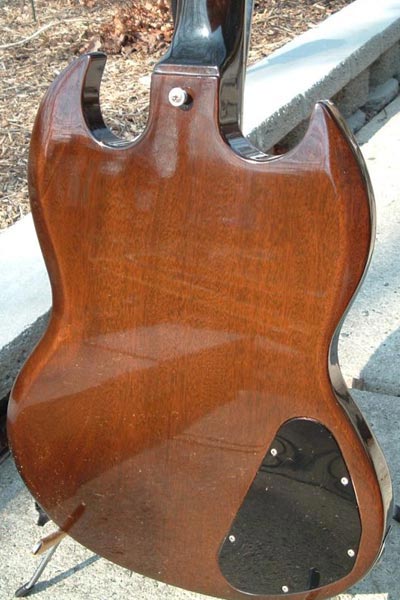• Left handed • Custom stereo wiring • Mahogany body • Set mahogany neck • Bound rosewood fingerboard • Short 30 1/2 inch scale • Translucent walnut finish
This is a very interesting guitar. A custom order instrument almost certainly. Left handed Gibson basses have never been widely available, but have often been offered by special order. On the surface, save the dexterity, this bass is identical to a standard late-period slotted headstock EB3 (compare with this 1971 EB3). The serial numbers are close and the mahogany body and three-piece neck / slotted headstock are of the same design. Hardware is broadly similar too - though the late '71 bass has 'Gibson logo' pickup covers. It certainly looks like the woodwork (including the issuing of serial numbers) occurred around the same time in the second half of 1971.
Price lists mid 1971 do not suggest the availability of left handed EB3s, though mention left handed EB0s were available at no extra price. These were the last of the slot head EB basses - by 1972 the range had been redesigned entirely - a vastly different bass with chunkier body; solid, painted headstock; unbound maple neck and repositioned pickup. A redesigned left handed EB0 was available with a $35 premium.
But the interesting thing is that this bass has a potentiometer date of week 8 of 1973 (see picture below). Let's assume this is an original part to the bass - it looks right, is CTS/Gibson part. It can then be assumed that this bass was ordered late in 1972 or early in 1973. Did Gibson use up an older body? Or did the buyer want the old style? Or a mahogany neck? Or wider-spaced pickups, to enhance the stereo effect? A standard EB3 was priced at $450 in October 1972 - with the faultless case (543), seen below at an extra $90. Left handed models were $35 extra (at least EB0s), and the stereo circuitry, although not listed would most likely be a similar price. This bass may well have cost over $600 when it was ordered.
It was not uncommon for Gibson to make instruments that were not immediately completed and shipped, and this is a clear example. No doubt this bass sat in the Kalamazoo plant for 18 months before being finished, fitted with hardware and shipped.
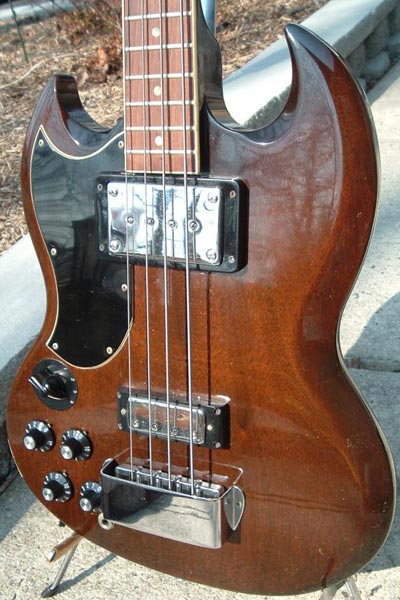
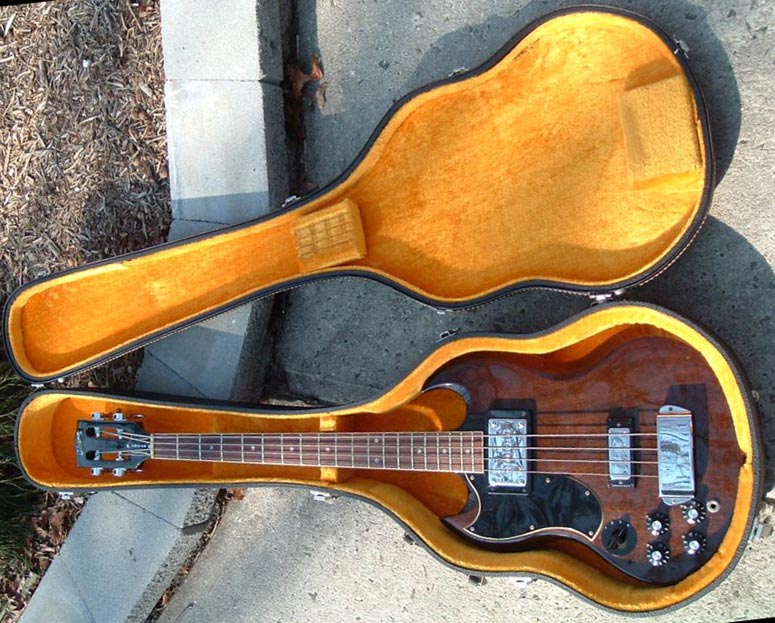
The EB3 was a short scale instrument, and although a long scale equivalent, the EB-3L was available, it did not sell in as large numbers. Both versions were offered in the same case - as can be seen there is still room here for a longer neck.
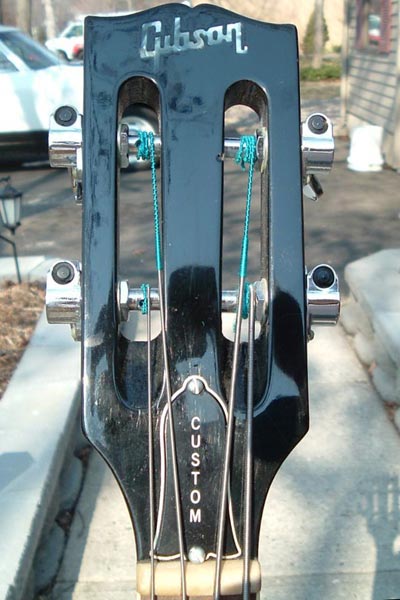
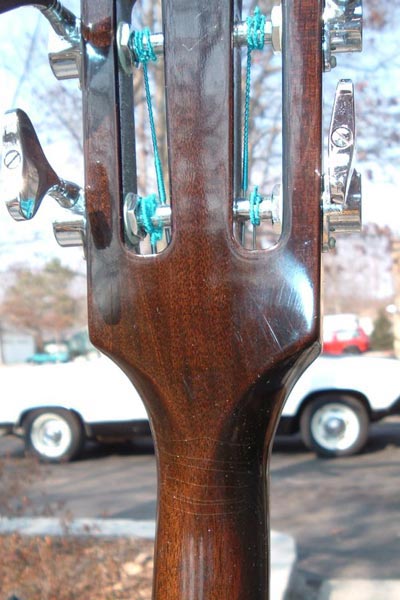
The bass is wired with stereo circuitry, and as such has two output jacks. The first, in the usual place for a slotted headstock EB, is on the edge of the guitar body, the second is on the front, next to the volume and tone controls. Typically the signal from each pickup would be sent to a different jack. If this is the case with this bass, the stereo functionality would only work in one varitone position; all others having just one pickup activated.
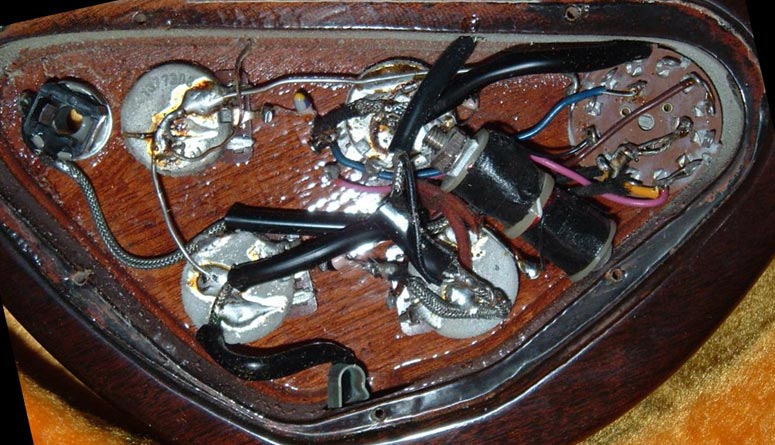
The circuit uses the newer black cylindrical choke (part 70-442), as seen in the EB3 series 2 loom, as opposed to the older rectangular metal choke (part GA-90C) seen on the majority of slotted headstock models. Again further evidence of this bass being assembled at the Kalamazoo plant in early '73, and not earlier example with a changed pot.


